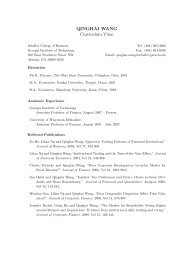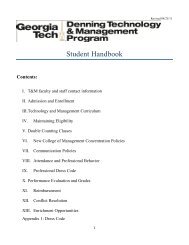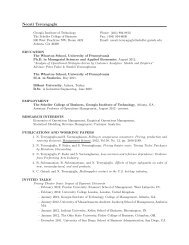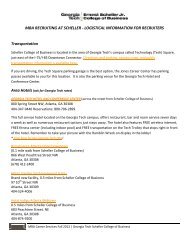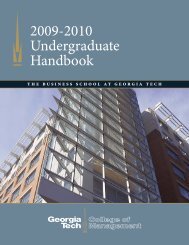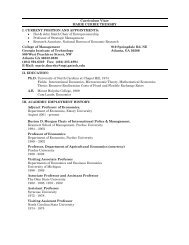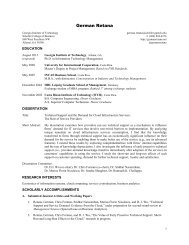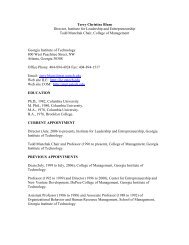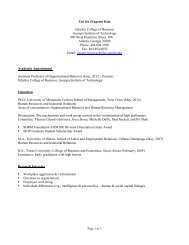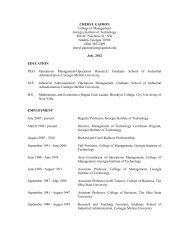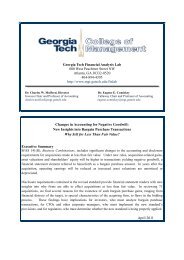Mars-Venus Marriages: Culture and Cross-Border M&A
Mars-Venus Marriages: Culture and Cross-Border M&A
Mars-Venus Marriages: Culture and Cross-Border M&A
You also want an ePaper? Increase the reach of your titles
YUMPU automatically turns print PDFs into web optimized ePapers that Google loves.
implementation challenges that remain in our way of finding a consensus measure of culture.<br />
Among the existing measures, in terms of use <strong>and</strong> acceptability across the different disciplines<br />
of management, however, Hofstede still remains the undisputed leader (Sivakumar <strong>and</strong><br />
Nakata (2001) <strong>and</strong> Kirkman et al (2006)).<br />
The other str<strong>and</strong> of literature our study relates to is that on transnational M&A. There<br />
exists very limited empirical evidence on long-term performance of acquirers who acquire<br />
firms from a foreign country though the role of law <strong>and</strong> the degree of shareholder <strong>and</strong> creditor<br />
protection in the acquiring firm’s country have been studied (see Kupiers, Miller, <strong>and</strong> Patel<br />
(2003)). 10 There have been a few studies of short-run returns of acquirers in cross-border<br />
acquisitions 11 . Bruner (2004) summarizes the results of 14 studies that focus their attention on<br />
returns to buyers of foreign targets. 12<br />
Revealingly, two of them detect significantly negative<br />
returns, two significantly positive while the remainders do not find any significant effects.<br />
Moeller <strong>and</strong> Schlingemann (2005) provide evidence that U.S. acquirers experience<br />
significantly lower stock <strong>and</strong> operating performance from cross-border than from domestic<br />
transactions, <strong>and</strong> attribute it to the inability of acquirers to correctly value synergies in the<br />
acquisitions.<br />
The rest of the paper is organized as follows. Section 2 describes the data. Section 3<br />
discusses the effect of culture on long-term performance of the acquiring firms. Section 4<br />
presents some robustness tests for these effects. Section 5 studies the effect of cultural<br />
distance on market reaction to M&A announcements. Section 6 concludes with suggestions<br />
for future research.<br />
10<br />
In contrast a large literature focuses on U.S. domestic M&A activities (see Bruner (2002) for<br />
a survey). The findings of previous studies indicate that acquiring firms earn zero or negative abnormal<br />
returns in both the announcement period <strong>and</strong> the post-merger period when making domestic<br />
acquisitions though results are sensitive to choice of techniques (Mitchell <strong>and</strong> Stafford (2000).<br />
11<br />
See Cakiki, Hessel <strong>and</strong> T<strong>and</strong>on (1996) <strong>and</strong> Eun, Kolodny, <strong>and</strong> Scheraga (1996), for instance.<br />
12<br />
Table 5.8 pp.111-112.<br />
8



